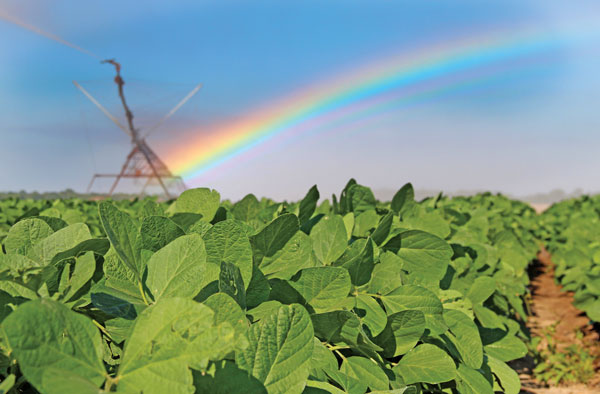
Can Southeast soybean growers make higher yields? Sure, but “higher” is a relative term. Can they make 70 or even 80 bushels of soybeans per acre consistently? Maybe — if they want to.
Delta soybean growers would now like to call 100 bushels per acre the new norm. Some standout growers have hit the mark.
Good soils, cooperative weather and good variety choices make high-bushel beans reachable. Even without record-setting yields, Delta soybean yield averages outpace Southeast growers by more than 10 bushels per acre.
In the Deep South, some growers still view soybeans as a good rotation at times, especially if prices are high, or when it is too late to plant anything else.
But do they care to go for higher yields?
Interest in soybeans in the Southeast is growing, due mostly to better soybean prices. In Georgia, for example, from 1990 to 2006 soybeans averaged $5.85 per bushel. From 2006 to 2012, the price averaged $11.33 per bushel.
To really compete for acres against other more established commodities like cotton and peanuts, soybeans need to average high yields if they are to pay off.
Again in Georgia, average soybean yields annually go in the mid-30 bushel per acre range, says Jared Whitaker, soybean specialist with the University of Georgia Cooperative Extension Service. And that’s fine — if a grower is happy with that return.
“A lot of it is mindset or culture,” he says. “There is no doubt we can increase yields, increase average yields, with only a few changes. And we really don’t have to think completely out of the box to do it.
“By doing a few things right, you can get 70 bushels per acre. And if a grower wants to go for higher yields, now is the time to do it, because $12, or even $10 per bushel soybeans look a lot better than $5.”
Maturity groups and planting dates are among key factors.
“The biggest thing is, no matter what I do in my trials — and it’s 9 times out of 10 — the earlier we are able to plant the higher the yields we produce,” Whitaker says.
In Georgia, a lot of soybeans go in behind wheat, pushing soybean planting later. Using an early maturing variety like Maturity Group V or VI and planting by mid-May in his small-plot research trials, Whitaker can get 80 to 90 bushels per acre by harvest.
In his research, he staggers planting dates from May to mid-July. “It’s a straight-line decline in yields the later you plant,” he says. “I figure you lose about half a bushel per day for each day you plant after May 10.”
So, how can a Deep South grower get higher soybean yields?
Just a couple of years ago, he says, by far the majority of soybeans grown in Georgia were Group VII. But that’s changing, he says, as growers now see better yield potential with Group V and VI planted earlier, when they can.
Determinate or indeterminate? For Georgia, he says, a large majority of the crop is determinate varieties, and there is still a lot of yield potential for determinates in the state.
But if a grower wants to swing for the fence and score big yields, choosing an indeterminate variety might be the first step.
For early planting, think about using Maturity Group V or an indeterminate variety like late MG IV or early V.
For early planting, plant May 10–30 with determinate varieties. Think about using an indeterminate variety for April 25–May 15 planting. Try for a final stand of 100,000 plants per acre if planting on 36-inch rows.
A lot of Georgia farms are set for 36-inch rows, but narrowing rows can help soybean yields. Going to 20-inch to 30-inch rows pays off, he says. For every one inch narrower than 36 inches, figure on a 0.7 percent increase in yield. When going to narrower rows, a grower can shoot for a stand of 125,000 to 150,000 plants per acre.
Other steps: Rotate behind corn. Fertilize in the fall ahead of soybeans. Plant a rye cover crop. Kill the cover in early March. And irrigation is a must — soybeans can’t stress for moisture, especially during flowering and early pod set.
It all comes down to what a grower can or wants to do in a field. Again, “higher yield” is a relative term.
A grower can select an earlier determinate variety, modify planting dates, fertilize properly and with irrigation he can bump yields and perhaps double what is usually Georgia’s average annual yield.
“Some growers don’t expect a lot from their soybeans,” Whitaker says. “That’s OK — but others realize yields can be higher, and that we could be doing more to get them.”
See more articles from the Southern Corn and Soybean Production Guide!
About the Author(s)
You May Also Like






